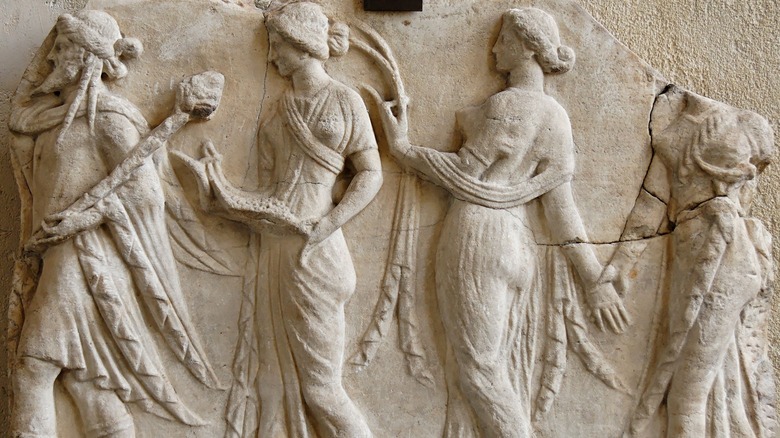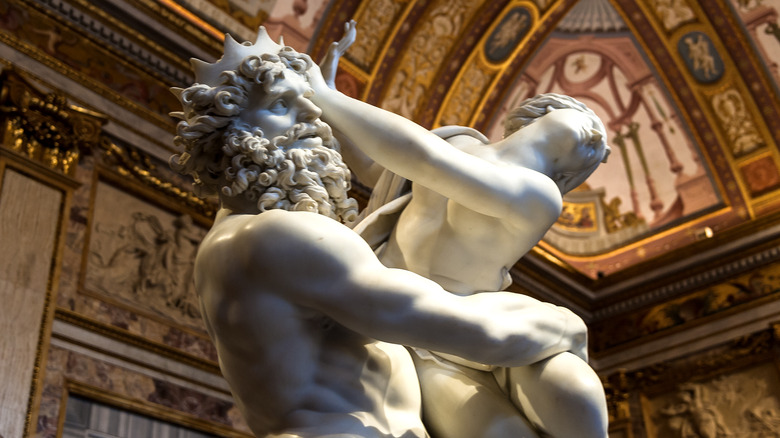Carpo: The Greek Goddess Of Autumn
The next time you step into a forest, take a look around, breathe, and envision the world as moved by living, conscious spirits. Each ash, conifer, oak, and laurel tree is governed by a melia, hamadryad, or other wood spirit that dwells in the trees, embodies them, and watches your every step. The same goes for every pond, stream, frog in the underbrush, mote of pollen in the air, and acorn crushed underfoot. The entire world, in fact — from the dome of the sky to the plane of the earth — is alive, interconnected, and part of a single family of sometimes disharmonious, but ultimately unified, gods and entities.
This is the perspective needed to understand how the ancient Greeks saw the natural world. Earth's seasons were sisters overseeing the progression of life to death, and death to life, cyclically through each and every year. These sisters — the Horae — have no specific, singular origin in Greek history, but were at least committed to writing by the 1st century C.E. by Roman scholar Gaius Julius Hyginus, per the History Cooperative. It's likely that tales and concepts of the Horae evolved over thousands of years before then and got distilled into three primary sisters: Thallo of spring buds, Auxo of summer growth, and Carpo of autumn. In fact, Carpo might have been another version of Demeter herself, earth goddess and mother of the seasons whose daughter Persephone returns from the underworld in spring.
[Featured image by Louvre Museum, Albani Collection; seized during the French Revolution; purchased by Louis XVIII, 1815 via Wikimedia Commons | Cropped and scaled]
Bearer of the harvest
When thinking of ancient Greece — from its 3,000 B.C.E. Mycenean Bronze Age all the way to Cleopatra's Ptolemaic dynasty-ending reign in 30 B.C.E. — it's important to remember one key thing: Greece was a subsistence society the entire time. A generation of bungled pregnancies and flubbed crop harvests in which a hit to stability from warfare or natural disasters meant civilization was done. That's why autumn (and Carpo), as a time of harvest and wise storage before wintertime and a dearth of food, was one of the most critical points of the year.
Carpo doesn't play a major role in Greek mythological stories, however — not like the keeper of order himself, Zeus. But she's still relevant, and she and the other sisters of the seasons are tangentially connected to Zeus through three of his other daughters, also called Horae: Eunomia (law), Dike (justice), and Eirene (peace). All three are mentioned by the Greek poet Hesiod in his 8th-century B.C.E. cosmogonical poem "Theogony," describing the creation of the world. Beyond Carpo's role and appearance in sculptures — as a beautiful young woman in robes — there's no other information about her.
In fact, as History Cooperative says, it's more accurate to conceive of Carpo and her siblings as entities of time — time being what underscores the turning of the seasons and agricultural patterns. This is why the Horae give us our modern word "hour."
Absent in winter
Possibly the most interesting part of Carpo's role in maintaining the proper order of time and nature comes from her connection to Demeter, goddess of "grain, agriculture, and fertility," per Greeking; in other words, the perpetuation of life itself. Theoi points out that in all likelihood Carpo — which is just a Romanized version of "karpo," the Greek word for "fruit" — was probably just another version of Demeter.
Demeter, for the uninitiated, stands out in the Greek pantheon as a particularly strange goddess that doesn't quite fit with the rest. In all likelihood, as the Metropolitan Museum of Art says, her stories predated the Greek Olympian gods as a local, tribal mother goddess, and she got co-opted into the Olympian family later on. A big part of her story involves the kidnapping of her daughter, Persephone, and Persephone's imprisonment in the underworld.
In the end, Demeter brokered a deal with Hades, god of the underworld, to allow her daughter to stay on earth with her two-thirds of the year — and with Hades one-third of the year. The one-third of the year when Persephone was gone was winter. Then, in spring when she returned to her mother Demeter, the fertile Earth, everything started to grow again. And indeed, Theoi explains that the Auxo (or Auxesia), the embodiment of spring growth, is just another name for Persephone.


